Are you traveling to Japan for the first time? If yes, then you have come to the right place.
It was my first time in Japan this year and well, what an experience it was!
Japan is a beautiful country in the Asia Pacific region known for its mild weather, stunning architecture, and unique culture.
But what I love the most about this country is the stunning landscapes and the plethora of delicious food you can find here.
So, what are you waiting for? Read on to learn more about the Top 20 Things to Know if You are traveling to Japan for the First Time!
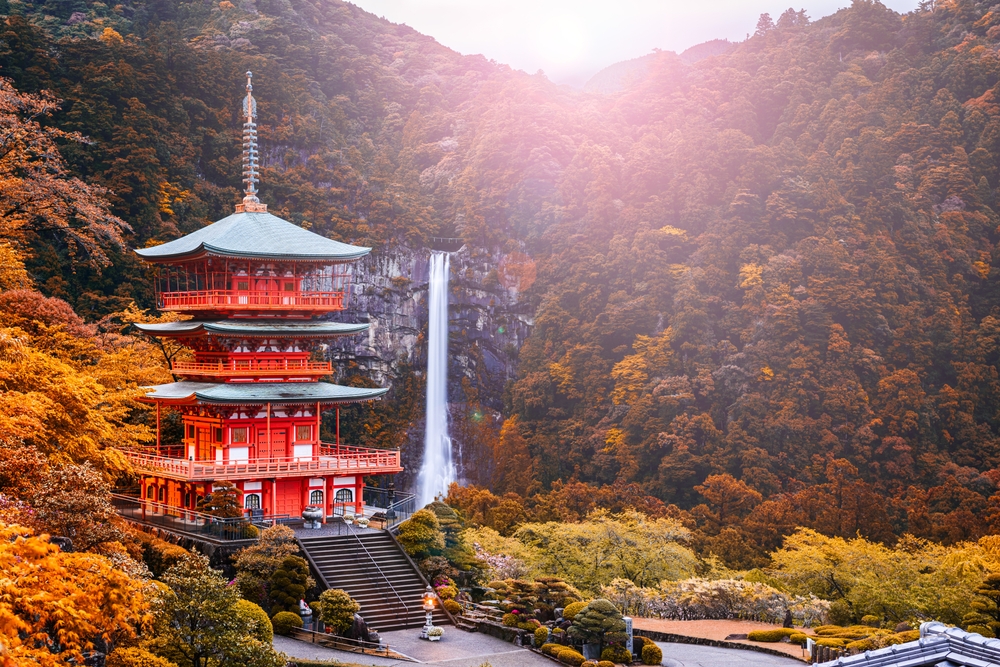
Traveling To Japan: 20 Things You Need To Know
Check On Your Country’s Japan Visa Entry/Exit Requirements
If it is your first time in Japan, then you must follow the Japanese entry requirements and check the visa requirements for Japan for your passport.
Thankfully, Americans don’t require a visa to travel to Japan for less than 90 days.
If you are not holding an American passport, it is wise to research your country’s Japan visa requirements.
Upon entry, you need to fill out the Disembarkation Card. Visit Japan Web will give you step-by-step instructions to complete everything at home.
Download the app on your smartphone. Fill out the customs/immigration forms to ensure you abide by Japan entry requirements. Before filling in the details, sign up for an account.
After filling out the forms, you will receive a 2D QR code that you show the immigration officials along with your passport upon arriving in Japan.
Check Out: Narita Airport (NRT): Private One-Way Transfer to/from Tokyo
Check Out: Tokyo: One-Way Private Transfer From/To Haneda Airport (HND)

Make Sure to Check Your Passport Before Traveling To Japan
You will need a current and valid passport to enter Japan. The expiry date of your passport should be longer than the intended date of departure from Japan.
Plus, be sure you have sufficient proof of funds and a return plane ticket.
Japan also requires one full blank page for stamping your entry and exit.
So, check your passport expiry date and empty pages well in advance as expedited handling fees to renew your passport are quite expensive.
If you are traveling on a long-haul flight from the US to Japan, this guide can help you.
If you are an American citizen with a Global Entry membership, you can download the Global Entry Mobile App to open a mobile account which will save time once you return to the USA.
Check Out: Kansai-Airport Express HARUKA One-way Ticket
Check Out: Express Bus for Narita Airport, Tokyo Station & Karuizawa
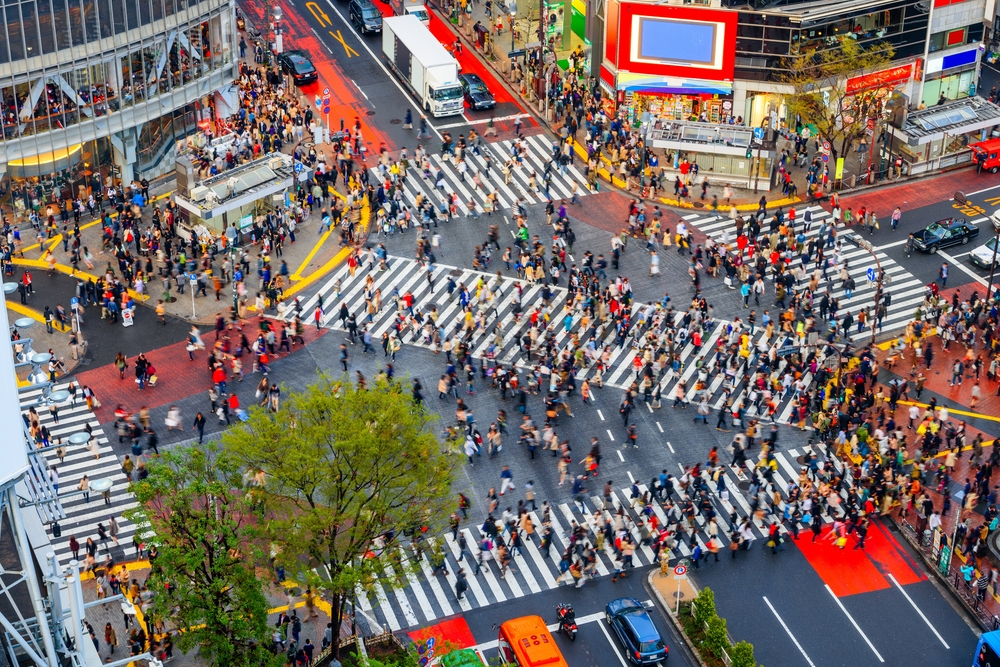
Purchase A Japanese SIM Card/E-Sim For Your Phone
When traveling to Japan, make sure that you purchase a Japanese SIM card or e-SIM for your smartphone.
You can install and activate an e-SIM when leaving from your home country or buy a local SIM card at the airport kiosks upon arrival, or in the Japanese cities.
I would also recommend looking into a ‘pocket WiFi’ router. You can connect multiple devices at a time. It is really handy and convenient to use.
Finally, check with your cell provider to learn about the international roaming options they offer. I purchased an international plan from T-Mobile. That is what worked best for me.
Check Out: Japan: Unlimited Pocket Wi-Fi Router Rental – Hotel Delivery
Check Out: Japan: eSIM Mobile Data Plan

Cherry Blossoms in Tokyo.
Cash or Credit Cards? What Is Best To Have?
Although I did carry a lot of cash, I noticed that most places accepted credit cards so I returned with lots of Yen unused.
This means you can pay for most of your Japan trip with credit cards but should carry some cash to pay small shops and stalls that do not accept credit cards.
When paying by credit card, choose the option of paying in the local currency, Yen, instead of the home currency. This can save you unnecessary fees on the conversions.
For cash, you will get the best exchange rate when traveling to Japan if you use an ATM.
I highly suggest you use an ATM within your bank’s network before you leave the airport to withdraw money in the local currency.
Another option., and what I did, was to have my American dollars converted into Yen at my local bank. This is a free service for bank customers.
Check Out: Kyoto: Gion Geisha District Walking Tour at Night
Check Out: Nara: Half-Day UNESCO Heritage & Local Culture Walking Tour

Notify Your Credit Card Company When Traveling to Japan
I also suggest alerting your credit card company before you travel to Japan.
Nothing is worse than being in a foreign country and locked out of your bank accounts because they flagged your transactions as potential fraud!
Check Out: Tokyo: Full-Day Sightseeing Bus Tour
Check Out: From Tokyo to Mount Fuji: Full-Day Tour and Hakone Cruise

Best Time to Visit Japan is the Non-Peak Season
Due to the cherry blossom bloom and autumn colors, Japan is expensive to visit from March to September.
During this period, flights are expensive, hotels increase their prices tremendously, and there are crowds at most famous attractions.
So, if you want to enjoy Japan in peace without paying a lot, plan a trip to Japan in the low season.
You can plan a trip from October to February (winter season) when the temperature is cold and fewer tourists arrive in the country.
Check Out: Kyoto: Full-Day Best UNESCO and Historical Sites Bus Tour
Check Out: From Tokyo: Guided Day Trip to Kawaguchi Lake and Mt. Fu

Me with cherry blossoms in Japan.
Use Japan Public Transportation
Japan has an amazing public transportation system so, you can easily travel around using metros, buses, and trains.
To use the metros in Japan, you will need a Suica card.
iPhone users can download the Suica app, load money using their credit cards, and then use the digital card to pay for the metro journeys.
Android users will have to get a physical card upon arrival in Japan.
Google Maps will help you navigate and there are information desks at the metro and railway station so you can always ask if you are confused about a route.
Walking is also a great way to explore the attractions in the major towns of Japan.
You can also use taxis or Uber there for convenience and privacy.
I used Uber most of the time there as the rates were set and comparatively lower than the taxi rates.
If you plan to visit multiple cities in Japan, check out a JR Pass.
However, it has become slightly expensive in recent months. Calculate your journey fare and then decide if you need it or not.
Check Out: Tokyo: 24-hour, 48-hour, or 72-hour Subway Ticket
Check Out: Hakone: Train Pass with Unlimited Rides & Activity Discounts

Plan to Dress For Several Seasons On The Same Trip
Plan on bringing lightweight clothes that you can layer.
Depending on the seasons it can be quite chilly in the mornings and when the sun goes down in the evenings.
You can wear all kinds of clothes as long as you dress conservatively for visiting a temple or a shrine here.
Check Out: Kyoto: Private Customized Walking Tour with a Local Insider
Check Out: Nagano: Snow Monkeys, Zenkoji Temple & Sake Day Trip

Tokyo Disneyland is a must-see!
Bring Along a Travel Adapter
One of the best things to know about traveling to Japan for the first time is that they use the same electrical outlet system as the USA!
So, you don’t have to worry about a travel adapter.
However, if you are a frequent traveler like me, I still recommend bringing one that allows you to charge multiple devices.
This universal travel adapter is what I used while in Japan for multiple devices.
This will ensure that all your devices are charged at all times
Check Out: Hiroshima: Peace Memorial, Itsukushima and Miyajima Tour
Check Out: Tokyo: Mt. Fuji, Hakone, Lake Ashi Cruise and Bullet Train

Japan is One of the Safest Countries in the World
As someone who has had her fair share of unsafe moments, especially in Paris where my entire family was robbed, I know how much safety is important while traveling to Japan.
Thankfully, Japan is one of the safest countries in the world.
So, I was quite comfortable walking on my own on my Japan trip.
But be careful of your belongings, especially your passport and smartphone.
Check Out: Kyoto: Arashiyama Bamboo, Temple, Matcha, Monkeys, & secrets
Check Out: Kyoto: Tea Ceremony Ju-An at Jotokuji Temple

Japanese Tipping Culture
If you are traveling to Japan for the first time, there is no tipping culture here.
You are not expected to leave a tip. If you do leave one, the service provider may return it to you.
However, a few establishments do accept tips and provide you with a small envelope to do so.
You can also choose to tip your tour guide or driver. Present the tip in a nice envelope and offer it with a small bow.
Otherwise, don’t worry about tipping!
Check Out: Sumida River: Japanese Traditional Yakatabune Dinner Cruise
Check Out: Tokyo: Hakone Fuji Day Tour w/ Cruise, Cable Car, Volcano
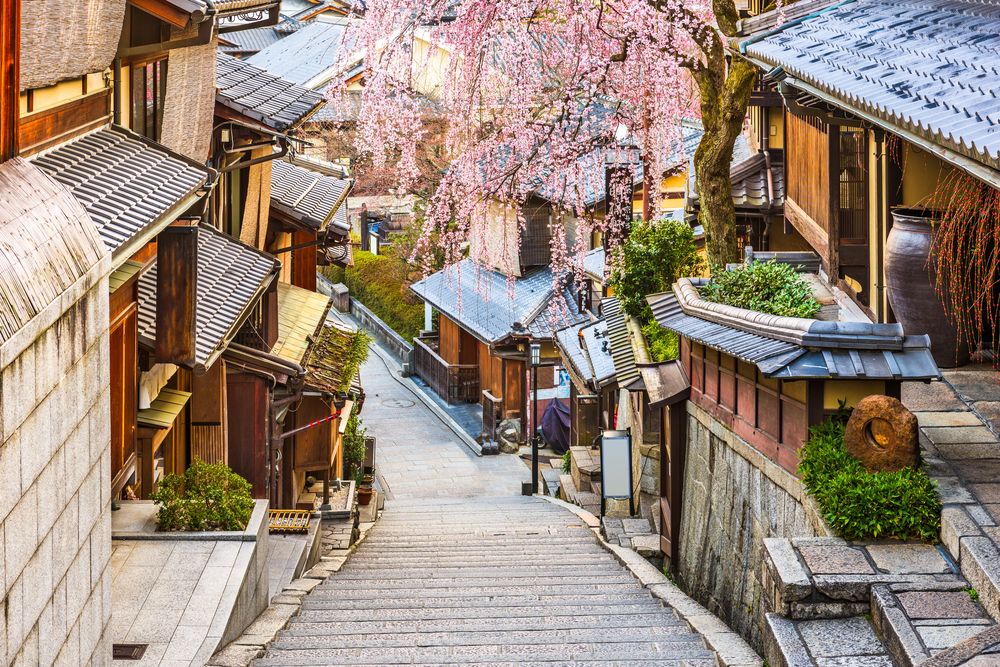
Book Attraction Tickets Online To Save Money And Skip The Lines
If you are planning to travel to Japan, one of my top tips would be to buy your attraction tickets online.
This way, you can get discounts on your tickets and can skip the wait line at the entry when exploring Japanese attractions.
Check Out: Osaka: Universal Studios Japan 1, 1.5, or 2-Day Entry Ticket
Check Out: teamLab Planets TOKYO: Digital Art Museum Entrance Tick

In the bamboo forest in Japan.
Is The Tap Water Safe To Drink In Japan?
Yes, the tap water is very safe to drink in Japan!
I suggest filling up and bringing a refillable water bottle with you when you leave for the day to enjoy Japanese sightseeing.
There are a few public water fountains in the Metro stations where you can refill your bottle.
Check Out: Tokyo: Asakusa and Skytree Go-Kart Tour and Photo Shoot
Check Out: Iriomote Island: Guided 2-Hour Canyoning Tour

Save Money By Getting Snacks And Convenience Foods At Local Grocery Stores
One of the top Japan travel planning tips is to buy fruits and snacks from 7-Eleven stores in Japan.
They are cheap and a good way to save money on eating out every day.
in Japan, you will find restaurants that have vegan or other alternative options. But eating out every day can become expensive so stocking up on groceries and snacks is a good idea.
Check Out: Kyoto: Tea Ceremony in a Traditional Tea House
Check Out: Tokyo: Sumo Show Experience with Chicken Hot Pot and a Photo

Most Japanese Will Understand Your English
If it is your first time to Japan, I am sure you must wonder how easy it is to communicate with the locals.
My experience was quite good and I didn’t face much difficulty here.
Most youngsters know English and can help you out with basic information.
Also, many public signs are displayed in English as well. You can also find English-translated menus at most restaurants here.
You can also download Google Translate to help you overcome the slight language barrier when visiting Japan.
Check Out: Kyoto: All-Inclusive 3-Hour Food and Culture Tour in Gion
Check Out: Tokyo: Kimono Dressing, Walking, and Photography Session

Carry Trash Bags When Traveling to Japan
Due to the 1995 poison gas attack in Tokyo, all public trash cans were removed in Japan.
So, if you are visiting Japan, carry a garbage bag with you and keep your trash in your bag until you can dispose of it privately in your room.
Trust me, you will find not a single trash can in restaurants, malls, or any public area. (Or only very very rarely!)
So, carry a garbage bag to avoid dirtying your purse/bag.
Check Out: Tokyo: Tsukiji Outer Market Food and Drink Walking Tour
Check Out: Kyoto: 3-Hour Fushimi Inari Shrine Hidden Hiking Tour

Keep Washcloths To Use in the Public/Private Washrooms
One of the most surprising things to know before visiting Japan is that public and private bathrooms don’t have paper towel dispensers.
Locals carry handkerchiefs in Japan.
I advise you to bring paper towels or carry a handkerchief when exploring Japan.
Check Out: From Tokyo: Kamakura, Hachimangu Shrine & Enoshima Day Tour
Check Out: Tokyo: Scenic Helicopter Flight

BONUS: Cultural Norms To Keep In Mind When Traveling To Japan
If you’ve never been on a trip to Japan, there are a few things you’ll want to keep
Manners & Etiquette When Eating
Eating on the go is a no-no. It is considered rude and there are very few trash cans in public places.
So, eat your meal at a restaurant before you begin exploring Japan.
Don’t rub your chopsticks together! It is seen as poor manners in Japan because it implies that your host is not serving you with quality utensils.
The o-shibori is a wet towel you’ll find at your table when you eat. The correct thing to do is to wipe your hands with the towel. Then place it back on the wrapper or tray it came on.
When I traveled in Japan, I packed light using only a carry-on. Read my tips here.
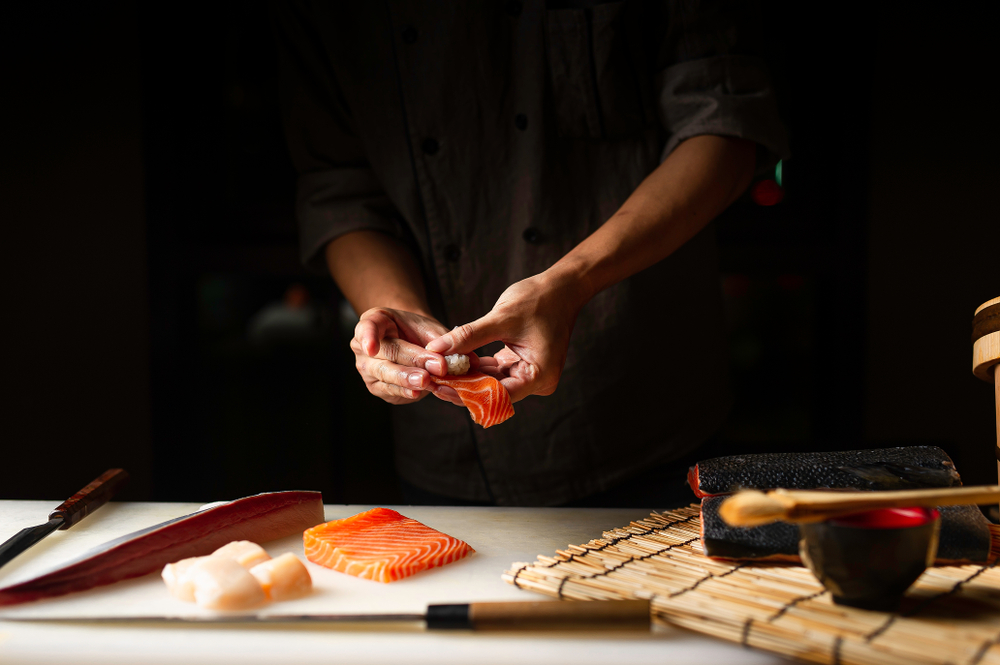
Manners & Etiquette When Visiting Temples & Shrines
Japanese temples and shrines are considered sacred religious spaces, so make sure you are respectful when visiting as a Japanese tourist.
When entering a shrine, it is customary to bow and not walk in the center path of the ‘gate’, known as a Torri or Shinto gate, as it is considered disrespectful to God.
When entering a temple, be careful of how you enter. Never step directly on the threshold of the main gate. Also, women should enter with their right foot while men with their left.
General Manners & Etiquette Tips For Japanese Tourists
Traveling on public transportation is a quiet activity. So, please don’t be loud when you travel in Japan.
Mask up when you’re sick! If you’re feeling sick, it is culturally expected to wear a mask! So I suggest bringing any extras you have with you, just in case.
Be ready to take off your shoes. Wearing your shoes inside is seen as extremely unhygienic. So, take off your shoes when visiting Japanese households, temples, and more.
The custom of bowing is pretty common in Japan. So, if someone bows to you, return the gesture. It’s a sign of respect!
Check Out: Kyoto: Hop-on Hop-off Sightseeing Bus Ticket
Check Out: Tokyo: Maki Sushi Roll & Temari Sushi Making Class
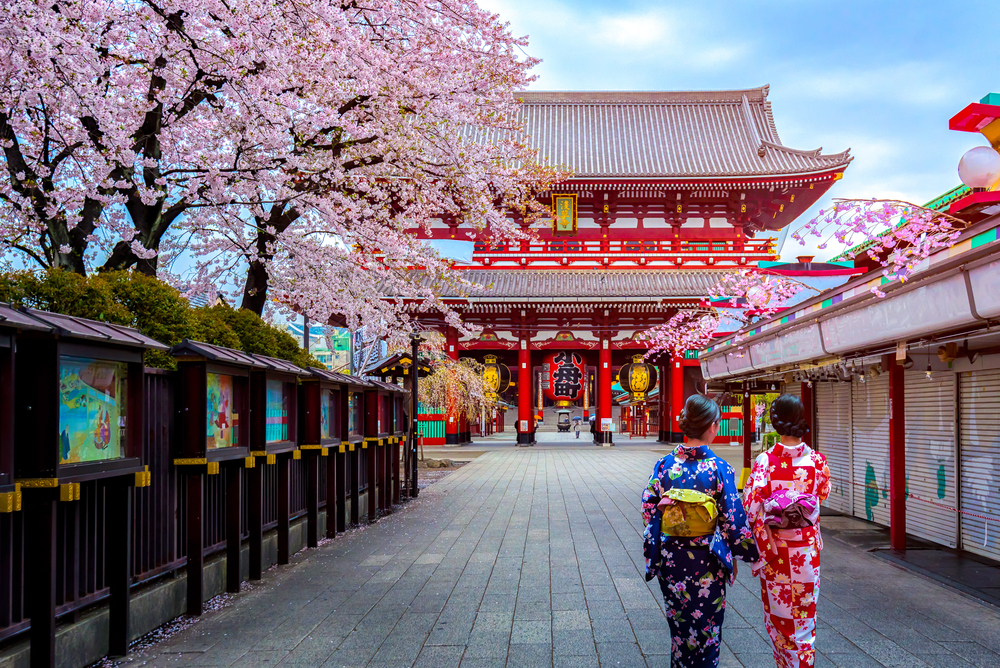
Where To Stay When Traveling To Japan
Tokyo
Prince Park Tower – If you’re looking for a luxury hotel in Tokyo during your trip to Japan, consider staying at the Prince Park Tower.
This beautiful luxury hotel has epic views of the Tokyo skyline from almost every room.
Book Your Stay Here: Booking.com
Hotel 1899 Tokyo – The Hotel 1899 Tokyo is a wonderful hotel near several popular attractions.
It is a 3-star hotel with an on-site restaurant, a 24-hour front desk, luggage storage, and free WiFi.
An ideal choice for those who want budget-friendly hotels in Tokyo.
Book Your Stay Here: Booking.com
Kyoto
Candeo Hotels Kyoto Karasuma Rokkaku – The Candeo Hotels Kyoto Karasuma Rokkaku is a beautiful moderately priced hotel in Kyoto, Japan.
Located in the heart of Kyoto, you’re just a quick walk or metro ride away from the most popular tourist attractions in Kyoto.
Book Your Stay Here: Booking.com
Osaka
Luxcare Hotel: If you plan to spend a few days in Osaka on your Japan trip, book your stay at Luxcare Hotel.
This 4-star hotel features comfortable and well-equipped family rooms and is close to the major attractions in this Japanese town.
Book Your Stay Here: Booking.com
Packing Tips For Your Trip When Traveling To Japan
When I traveled in Japan, I packed light using only a carry-on. Read my tips here.
This unisex RFID-blocking concealed travel pouch is lightweight and comes in several colors. It has lots of organization to give you peace of mind.
If you have a pouch already you may not want to or need to invest in a new one. If it does not come with RFID protection, these RFID sleeves would be handy to prevent identity theft.
I was never a fan of packing cubes until I tried them out! Now I am sold. These Bagail packing cubes are the exact ones I use whenever I travel.
This Anker high-speed phone charging battery is the exact one I carry with me on all of my trips.
My daughter gifted me with this FugeTek Selfie Stick and Tripod. It has Bloothtooth connectivity so it is very easy to use.
I never leave home on a trip without my Bobble filtration bottle. The 18.5-ounce size is perfect for travel and it will fit nicely in the pocket of a backpack or your purse.
The replaceable Bobble carbon filter ensures fresh clean water whenever and wherever you fill the Bobble.
Perhaps you are traveling a long distance and packing space is a premium. Then this collapsible silicone foldable water bottle would work well for you.
You will want to bring a backpack or daypack to store snacks, water bottle, phone, extra clothes, etc… This foldable water-resistant backpack would be great.
You may be traveling to Japan in warm weather, and you may want a pair of sandals to wear exploring. I highly recommend these Vionics adjustable strap orthotic sandals.
We all must protect our eyes from the sun’s harmful UVA/UVB rays. These unisex polarized sunglasses come in numerous lens colors and frame designs and are extremely affordable too.
This world traveler adapter kit can charge several devices at the same time.
As an Amazon Associate, I earn from qualifying purchases.
 Paris Instagram Spots: 35 Best Locations
Paris Instagram Spots: 35 Best Locations